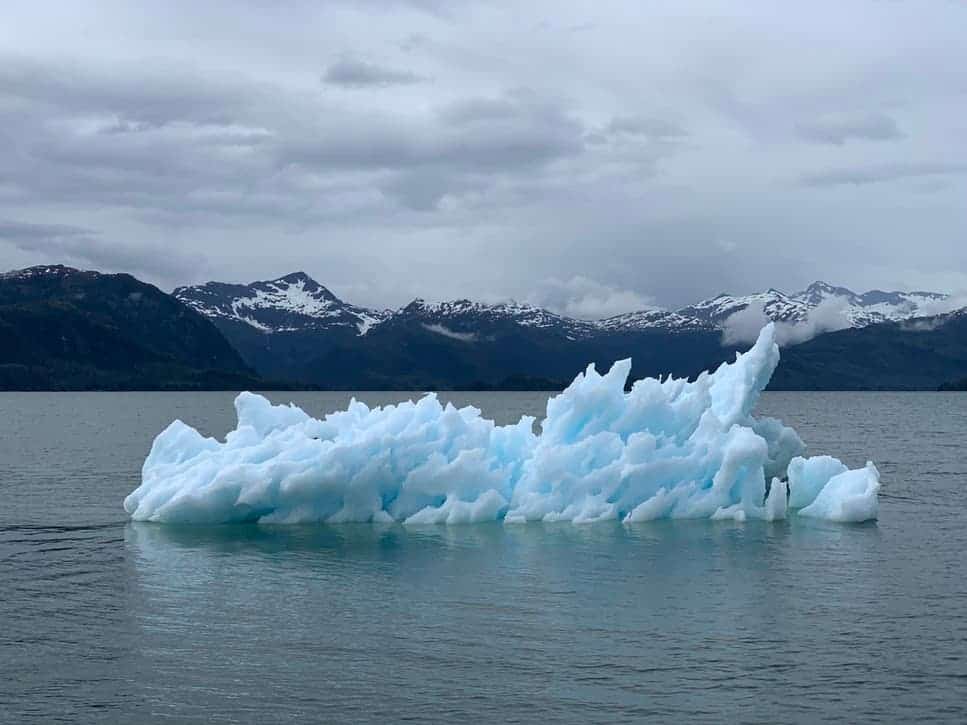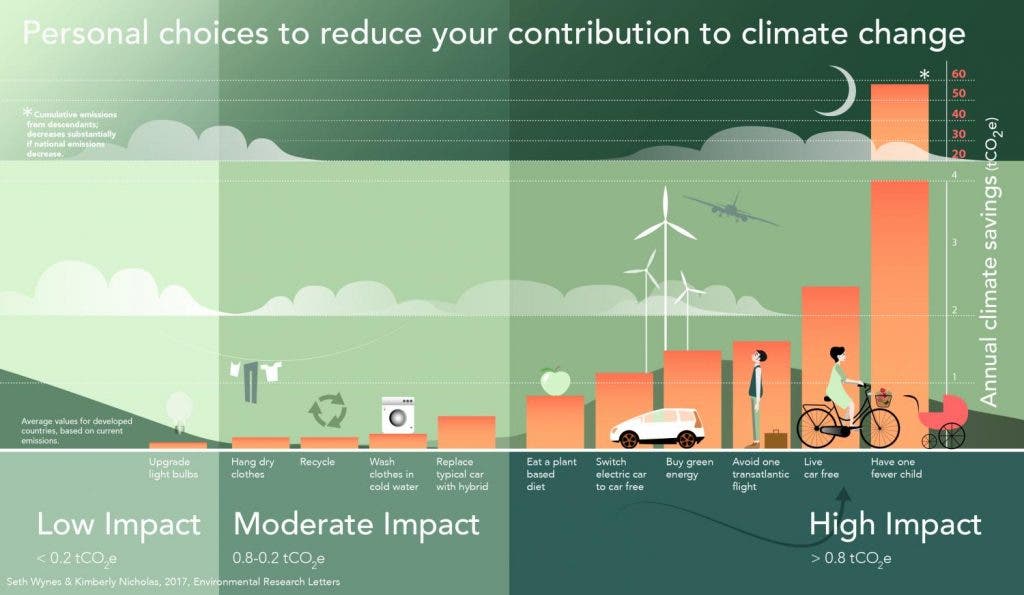If you’re reading this, the odds are you’ve come across mentions of climate change more than a couple of times. You may have also come across mentions of “scientific consensus”, “man-made global warming”, or “crisis” — and maybe wondered what all that is about. Is it truly a crisis? Are we truly responsible for it? How certain are scientists of this?
In a nutshell, climate change is a global crisis, and there is a scientific consensus that human activities are causing it. Let’s see how we know that, how bad things are, and what we can do about it.

Scientific consensus doesn’t mean that a bunch of researchers gathered together for coffee and sort of agreed on it. There are thousands upon thousands of studies published on the matter showing not only that climate change is happening, but that we are causing it. If you were to print them on paper and stack them up, it would be a literal mountain of evidence.
We won’t get into all those studies nor try to summarize all the relevant scientific information (after all, that’s what the International Panel on Climate Change reports are for), but we’ll look at some of the main examples from the body of evidence around climate change.
How we know temperatures are rising
Well this one is pretty simple: we’ve measured it. Since the Industrial Revolution (around 1850), several independent research labs and organizations have tracked temperatures in various places around the world. Initially, the data was quite scarce, but as the years went by, more and more groups started tracking it, and global temperature assessments have improved substantially. Since we’ve launched satellites, the data has become even clearer.
In the past century, global temperatures have increased by around 1 degree Celsius. The growth hasn’t been smooth as there are natural year-on-year variations, but the overall trend (and especially in the past half-century) is clear: temperatures are rising.

However, the long-term temperature pattern since 1850 is clear. The historic trend of atmospheric warming observed for the last 150 years is remarkable and is substantially greater than can be explained by natural variations.
We can be very confident in this data. The scientific process of measuring temperatures has improved and become refined. Scientists regularly carry out checks, and there are already multiple reliable datasets, and their observations all tell a similar story: global average temperatures are rising.
Isn’t this a natural change?
Some variations in the planet’s climate are, of course, normal. Plenty of things can drive temperatures higher or lower. However, this increase is unlike anything we’ve seen in Earth’s history, and it can’t be explained by natural causes.

Researchers have analyzed and taken into consideration the effects of natural agents (solar activity, volcanic eruptions, etc) — and even though these can have a noticeable effect, they cannot explain the overall warming trend. Processes taking place on the planetary scale typically take a far longer time. For instance, shifts like the ones in Earth’s orbit (which are happening constantly) are predictable, and this is not what we’re seeing here.
Okay, so what’s causing climate change?
The main drivers are greenhouse gases. Carbon dioxide is chief among them, with other gases (like methane) also playing a role.
Since the start of the Industrial Revolution (when people first started using fossil fuels on a wide scale), carbon dioxide concentrations in the atmosphere have risen from around 280 parts per million to around 410 parts per million today. Methane concentrations have also risen from 715 parts per billion in 1750 to 1,866 parts per billion in 2018. This change is what’s driving climate change.
The fact that greenhouse gases are able to trap heat and keep it in the atmosphere has been demonstrated in the mid 19th century; there’s no doubt about this, it’s a simple and well-established fact. The accumulation of greenhouse gases is causing the planet to warm up in response — carbon dioxide (CO2) can last for centuries in the atmosphere.
The greenhouse effect is not, in itself, a bad thing. The fact that it exists (and that greenhouse gases are naturally found in our planet’s atmosphere) is part of what makes our planet livable. Under a normal situation, the carbon would be in a state of balance, but we have changed that balance. By burning fossil fuels and clearing land, we produce more greenhouse gases than the planetary system can absorb. There are other ways through which humans produce emissions (such as agricultural soil management or growing livestock).
Wait, but we’ve only started measuring recently. How do we know what’s happened in the past?
Good question. To understand how the climate changed in the past, before we were measuring temperatures directly, climate researchers rely on indirect pieces of evidence called “proxies”. Tree rings are an example: if you look at the rings of a tree, you can figure out what that year’s weather was like (in general terms). Ice cores and coral skeletons can go back far longer than that, helping researchers piece together how temperatures shifted over longer periods of time.
Of course, this isn’t as accurate as our modern estimates, but it’s good enough to give us a general idea of what happened. Using these proxies and boreholes drilled deep into the Earth’s crust, researchers can identify temperature shifts over longer periods of time. This is how we have an idea of what happened many years before we actually started measuring temperature.
Okay, so it’s just that temperatures are rising?
No! Surface temperature is just one indicator of a changing climate. Patterns of snowfall and wind are changing, as are the animal and plant distributions. All of these carry “human fingerprints” on them.
Furthermore, even when we say that global temperatures have risen by 1 degree, it’s not like all the world is just one degree hotter all the time. Climate change doesn’t happen in a uniform and quiet manner — some places may not see any heating at all, while others will see heating way beyond the average. Also, the heating isn’t spread out nicely over every day of the year. Instead, climate change can lead to extreme heat during the summer, but also extreme cold during the winter.
Researchers have noted a multitude of different effects associated with climate change. Here are just some of the most severe ones:
- Shrinking ice sheets and snowmelt. Greenland and the Antarctic are losing billions of tons of ice per year.
- Sea level rise. Even relatively low amounts of sea-level rise could displace hundreds of millions of people worldwide.
- Warming ocean and ocean acidification. Not only are the oceans getting hotter, but they are becoming more acidic as they absorb carbon dioxide, which creates an unlivable environment for many sea creatures.
- Extreme weather events. Research is increasingly showing that extreme weather events such as heat waves and large storms are likely to become more frequent and intense due to climate change.
Why does this matter?
Climate change will affect our lives in multiple ways. From the direct weather effects and reducing crop yields to damaging ecosystems and spreading the habitats of mosquitoes and ticks, climate change will affect your life, no matter where you live on the globe.
Is this really a bad thing?
Yes, it is.
You could make an argument that some parts of the world would benefit from a bit of warming, but as we mentioned before, this isn’t a smooth increase of a few degrees. Even if a very small minority of the planet will benefit from climate change directly, the odds are that it will still suffer more due to what’s happening in the rest of the world — and as an average for the whole planet, climate change is expected to have drastic effects.
Climate change is already costing the world at least a few hundreds of billions of dollars every year, with other estimates putting the figure more in the trillions — and the numbers will continue to grow as long as our emissions aren’t reduced. Furthermore, if we reach some critical points, the effects of climate change will become irreversible and far more costly.
Can we do something about it?
Absolutely.
Emissions have not peaked yet, though, and will continue to rise — the quicker we can reach the peak and then work on reducing global emissions, the better. So the first and most important thing to do is ensure that we, as a society, reduce our emissions as much as possible.
To ensure a coordinated response to climate change, world leaders signed the 2015 Paris Agreement, which outlines actions to be taken by each country to ensure that temperatures don’t rise by more than two degrees. We’re not doing too well, however. Researchers have drawn up several scenarios, and current policies are en route for a rise of about 3 degrees Celsius.

Staying within 2 degrees would spare us from some of the worst effects of climate change, while staying within 1.5 degrees would be even more beneficial. But for that, we need way more action.
What’s something that me, as an individual, can do to help?
While individual action on its own (without the help of governments and companies) won’t be enough to stop climate change, it is still important that we work to push things in the right direction. In 2017, a team analyzed 39 peer-reviewed papers, carbon calculators, and government reports to calculate the effects of individual lifestyle choices in 148 possible scenarios. They found that the 4 most impactful choices are:
- having one fewer child. For developed countries, this reduces emissions by 58.6 tonnes of CO2 — by far the most impactful option, though something most people likely wouldn’t consider up for discussion;
- living car-free (2.4 tonnes of CO2);
- avoiding airplane travel (1.6 tCO2e saved per roundtrip transatlantic flight);
- eating a plant-based diet (0.8 tCO2e saved per year). This is also something that many people don’t consider when it comes to reducing emissions, but meat comes with a huge carbon footprint (as well as water and land usage).
“These actions, therefore, have much greater potential to reduce emissions than commonly promoted strategies like comprehensive recycling (which is 4 times less effective than a plant-based diet) or changing household light bulbs (8 times less effective),” says lead author Seth Wynes.

Pushing politicians and companies to do the right thing and take tangible action is also important. Remember, we’re all in this together.
The bottom line
Climate change is possibly the biggest challenge of our generation. If the pandemic is an out-of-control car, climate change is an 18-wheeler with loose brakes. We need to start braking as quickly as possible so that even if we do collide with something, our speed isn’t too high. It won’t be easy, it won’t happen overnight, but we already have the tools required for the task, so we’d better start braking.
Fixing climate change will not only ensure that we create a sustainable future for ourselves and coming generations, but it may also save us money in the long run. It’s a problem that we have caused and whether we like it or not, we will need to fix it or suffer the consequences.


